The days of earnest, purpose-driven marketing may be behind us. This year brands have turned to laughter to entice and entertain shoppers
You’ve got to laugh. Haven’t you? “We’ve had to live through exceptionally bleak years, with the cost of living crises, the pandemic, wars, atrocities, endless political upheaval and grave environmental concerns,” says Trevor Robinson, one of the team behind 1992’s slap-happy ‘you know when you’ve been Tango-ed’ ad. “We’ve been in desperate need of humour as a comfort blanket – or to just take our minds off things for a while.”
It appears someone has belatedly told the marketers. According to Kantar Link+ data, the use of humour in advertising had been in decline for the past two decades. But “the happy news is that it’s making a comeback, especially in the UK”, says Kantar head of creative excellence Lynne Deason. While the share of ads using humour is not quite at the two-thirds mark of the early 2000s, over the past year 56% did.
So where did the funny go? Why has it come back? And how are brands using it to their advantage?
Much of the reason the chuckles left advertising was because the past decade in particular saw the rise of ‘purpose-driven marketing’, which is centred on a social cause, with a corporation’s claimed ‘core values’ brought to the fore.
“Ten years ago, purpose and meaningful change gave brands something new and distinctive to stand for,” says Guy Bradbury, creative partner at M&C Saatchi London. “The world was burning – as it is now – and brands stepped in.”
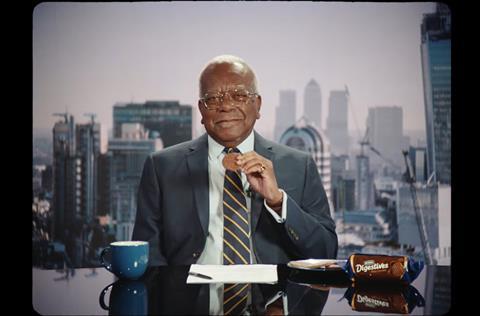
To begin with, that meant brands with a purpose stood out. No longer.
“What we’re seeing now is a purpose space that has become overcrowded and homogenous. And brands have lost their distinctiveness,” Bradbury says.
There’s also the growing risk of backlash: Costa Coffee and Bud Light have both suffered social media scorn this year from ‘anti-woke’ voices and, in the latter’s case, sales have suffered as a result.
Nowadays, being ethical and purpose-driven is “table stakes” says Bradbury. Brands behaving badly “in today’s world will be cancelled anyway”.
While the client-side should take some of the blame for the earnestness, agencies need to as well. “The advertising industry can be guilty of taking itself too seriously,” says Martin Beverley, chief strategy officer at Adam&EveDDB, which has created overtly funny ads for Marmite, Pot Noodle, Lucozade and Quorn. “We need to remember we aren’t here to save the world.”
The announcement advertising awards Cannes Lions will introduce a new gong for best use of humour in branded communications could help them along, too.
“We’ve now passed ‘peak purpose’,” says Dave Billing, executive creative director at Fold7, which works with Carlsberg, PZ Cussons and Diageo. “Whilst brands should continue to do all the good they can in the world, in the end it’s our collective decision as marketers and agencies whether that activity should form the basis of our communications.”
Besides, the data on humour in advertising is becoming too categorical to ignore. An Oracle consumer survey last year found 91% of people prefer brands to be funny and 72% would choose a brand that uses humour over rivals. Those numbers are even higher for Gen Z and millennials.
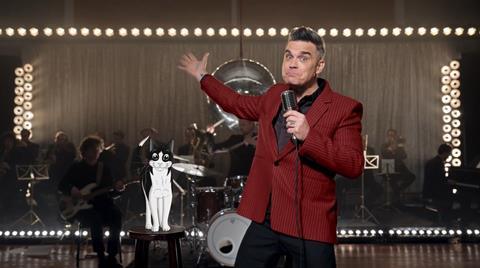
“Not only do we learn [from] and retain things that we’ve found funny more effectively, we like people who are enjoyable to be with. The same is true with advertising and brands,” says Kantar’s Deason.
Kantar identifies six humour styles in advertising: everyday laugh; childish prank; shock value; put down; clever wit; and innocent smile. And as those categories suggest, experts agree ads needn’t be laugh-out-loud every time. A clever pun can be as effective as a childish prank.
“Entertaining people in return for them giving up some of their time to engage with our communications seems like a fair exchange,” Billing says. “And being funny by no means precludes talking about serious issues.”
A notable example came when Deliveroo promoted its support for food banks with a comedically bad choir led by ex-soap star Shaun Williamson. “Humour is an amazing tool for emotionally connecting with consumers,” says Arabella Jenkins, senior consumer communications manager at Deliveroo.
Meanwhile, other brands have had success through playing the role of mischief maker.

Challenger brand Crave used product names that were cheekily close to its rivals (such as Pickled Onion Monster Feet and Flamin’ Hot Wots’inits), and then used the legal threats from PepsiCo and Ferrero to its advantage, putting billboards outside Sainsbury’s that said: “Please stock us so we can pay our legal fees.”
Even the once sensible and stuffy M&S has prospered from joking around on TikTok with its well-loved mascots Percy Pig and Colin the Caterpillar. And Aldi’s dry, tongue-in-cheek ads and social media presence has helped fuel its rapid rise in recent years.
However, the difficulty lies in the fact it’s usually more difficult to get a laugh than create a sombre story of social good. Funny is, after all, highly subjective.
“It’s a tricky tightrope for brands to walk,” says Monica Majumdar, head of strategy at Wavemaker UK, which has worked with Evian and Trojan. “Content that uses humour can easily go awry.
“However, it is worth doing. Humour is a very British mechanism to deal with the difficult. In the end, no one ever said they were bored of laughing.”
Alcohol: Cider
Thatchers
Aardman animation studio has a long history in fmcg brand advertising, its output including Chewie the Chewitsaurus, the trombone-playing Lurpak man, and ads for Nestlé, GSK and Kraft Heinz. It’s little wonder – in a world of ubiquitous CGI, Aardman’s stop motion techniques are a true scroll-stopper.
Thatchers Cider tapped Aardman for its summer ad campaign to tell the story of its long history in the west country and “total commitment to quality, perfection and sustainability”. The warm, bucolic short features cameos from fourth-generation cider maker and company MD Martin Thatcher and Myrtle, the family dog.
A team of 40 creatives at Aardman were involved in the film, with animators alone requiring more than 480 hours to shoot the 40-second commercial. Cracking effort, Thatchers.
Alcohol: Ale & Stout
Guinness
Pints of Guinness sing along to Bonnie Tyler’s ’80s power ballad Holding Out for a Hero in the brand’s biggest marketing campaign to date for its 0.0% version drink.
Beyond the funny faces in the froth, several clever devices are at play, with the song choice championing those choosing not to get sloshed (perhaps because they’re doing the driving later). But it’s the witty tagline that seals the deal: Make it a St Patrick’s Day to remember. We can all drink to that.
Alcohol: Lager
Birra Moretti
The beer brand created a TV series – Live Italian – for Amazon Prime this year, which saw Jack Whitehall, Maya Jama, and Lawrence Dallaglio document their travels across Italy.
The series “marks a major milestone for the brand” said Michael Gillane, Heineken UK’s marketing director.
Crucially, the series avoided becoming an extended ad and was genuinely entertaining. Whitehall requesting alphabetti spaghetti from stern artisan chefs? Molto bene.
Alcohol: Spirits & Liquor
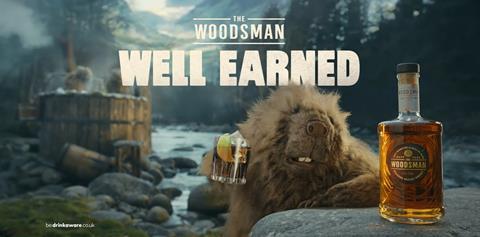
Whyte & Mackay
The premise of the first major TV campaign for blended scotch The Woodsman is that you don’t just drink it, you earn it.
“When it came to finding the perfect mascot, there was only one choice – the beaver,” explained the ad’s creative director Jon Gledstone.
Off to a Bulgarian forest they went to shoot the beavers – hand puppets, not CGI – grafting hard before “doing what all doers do when they’re done doing” as Gledstone puts it: a tub soak and sip of Woodsman.
Alcohol: Still Wine
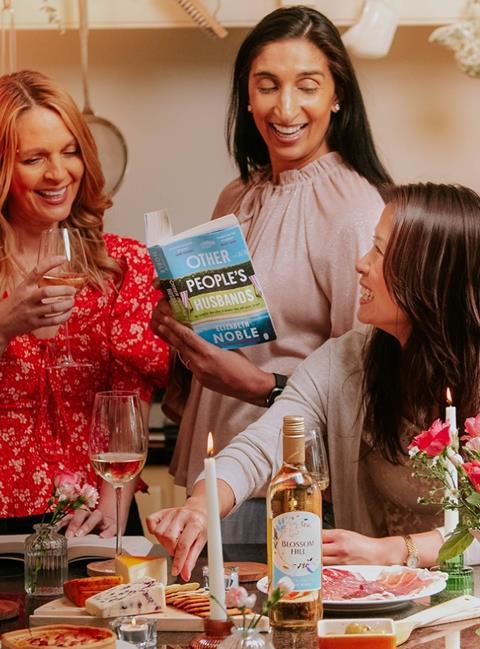
Blossom Hill
The brand slowed its fall in value this year – in decline due to a broad consumer cutback on booze – by squarely targeting what Ben Blake, Treasury Wine Estates head of marketing, called a “slightly more mature consumer”.
Its partnership with publisher Penguin was a savvy move. The campaign gave customers early access to new summer novels by female authors, and offering up great books proved a great read of a key demographic for Blossom Hill.
Bread
Warburtons
Robert De Niro and George Clooney have already appeared in Warburtons ads – so how could the brand possibly top that? The answer for 2023: drafting in Samuel L Jackson to join what he called the ‘Bolton alumni’.
Jackson plays company chairman Jonathan Warburton and responds fiercely to a tweet comparing the brand’s Toastie loaf to shelf rivals. With all the articulate anger of his Pulp Fiction character, Jackson exclaims: “What gives?! What gives, tweety pie, is me – Jonathan Warburton. I GIVE! And hell hath no fury like a baker scorned, Steve.”
The real Jonathan Warburton – who makes a cameo appearance – has conceded such celebs come at “huge outlay” to the company. But the star-studded ads are working, and the latest is furiously fun.
Baby: Skincare

Childs Farm
What kind of monster wouldn’t smile at a cute baby giggling their way through bath time? It’s a simple ad that in System1’s analysis achieved an ‘exceptional’ spike rating, meaning the brand was destined for at least a short-term lift. But as the most highly ranked ad of the 91 reviewed this year by System1 in the babycare category, it will have secured a legion of new customers for the long term too.
The ad is gimmick-free and highly effective. And – like those bubbles – it pops.
Bagged snacks
Mini Cheddars
The brand first tapped director Robert Strange in 2021, for trippy 2D campaign Welcome to Cheddar Town.
This year, the cheesy locale was revisited, to find residents so desperate for the snack they chase them down with nets and lay traps in a bid to quell their appetite.
The aesthetic has kid appeal but the campaign’s true target is young adults. “The cheeky nature of the ad creative is set to resonate with a new generation of snackers,” Pladis said.
Batteries
Duracell
Branded batteries are under threat from own label. Duracell tackles this head on in its campaign, which depicts a dad looking past Duracell’s range to pick up a plain pack. “Hmm, they’ll never notice,” he shrugs.
Of course, wife and daughter do – and when household items run out of juice they scream. “Someone’s made a questionable choice,” says the Duracell bunny, cleverly making saving money on batteries into a ticking time bomb of disappointment for your loved ones.
Canned food
Heinz Beanz
The protagonist’s holiday is off to a bad start. His luggage fails to appear at the airport, causing him to cry through breakfast at the hotel, while swimming in the pool, during karaoke, on a night out and beside the sea. Why so distraught? “A week earlier” we see our hero filling his suitcase with cans of beans.
‘Too Good to Leave Behind’ states the tagline – not the first branded ad to play on the idea some customers can’t bear to exit the country without a product (see also: Yorkshire Tea).
Confectionery: Sweet biscuits
McVitie’s
It is one of the UK’s most loved brands, according to YouGov. But in recent years the health of the McVitie’s name has been in decline. After peaking in early 2021 with a 34.7 score on YouGov’s BrandIndex measure of consideration, quality and value perceptions, this year the metric had fallen to 28.1. Still way above category rivals, but enough of a drop to concern the “definitive biscuit brand”.
The voiceover for this ad – the unmistakable dulcet tones of Trevor McDonald – introduces cultural icons with the phrase “there is only one…” – but the visuals show humorously shoddy imitations. Even the voice, it appears, was an imposter all along. Cut to the real McDonald, biscuit in hand and back behind the newsdesk for the first time in 15 years. “I’ll take it from here,” he says.
And finally: it’s a corker.
Cereals
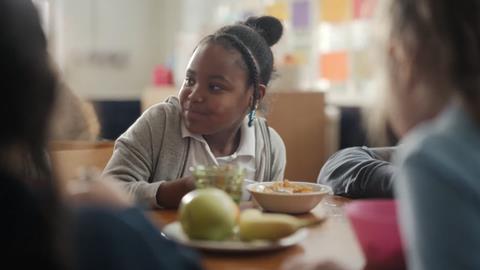
Kellogg’s
There has been a lot of concern for the community and planet from brands recently. Some of it suspect or insincere.
But kudos to Kellogg’s, which, without great fanfare, for the past 25 years has been quietly supporting breakfast clubs at thousands of schools.
The brand has more than earned itself a public pat on the back, which comes in the form of this touching campaign to mark the programme’s anniversary. Kids take a bowl, Kellogg’s take a bow.
Condiments
Heinz Ketchup
This is a montage of obsession – from sneaking ketchup sachets into fancy restaurants to enduring the pain of getting a Heinz tattoo. The message: People’s love of the red stuff is strong.
The quirkiness of the ad extends to the soundtrack and quickfire mish-mash of different film stocks.
Consumer attention to the brand was further drawn by a clever US campaign that exposed ‘fraudulent’ restaurants refilling Heinz bottles with inferior sauce.
Confectionery: Chocolate
Cadbury
Considering its minimal set-up – two actors (one unseen), a car interior and one block of chocolate – Cadbury delivers a knockout emotional sucker punch
A father has had a shaky first day at a new job. His son on speakerphone gives reassurance – with both his words and the Dairy Milk he hid in the glovebox earlier.
Whole essays could be penned on its portrayal of the father-son relationship. What isn’t said is just as powerful as what is.
Confectionery: Sugar
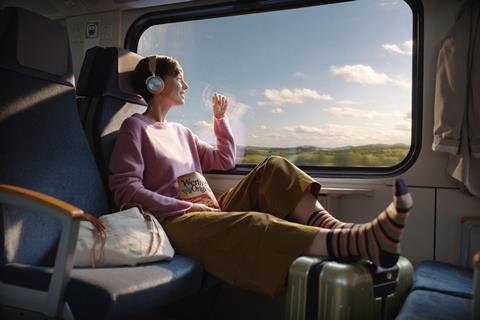
Werther’s Original
The closest thing to a kindly grandad in the brand’s continuing campaign is a rather hip older gent in puffer gilet, rolled up sleeves and trendy specs out walking four dogs.
The butter candies are no longer a scrumptious sweet passed down from your grandfather’s grandfather, but a “little piece of warmth” in your busy day.
The pivot appears to be paying off, with significant volume and value gains through the year.
Dairy drinks
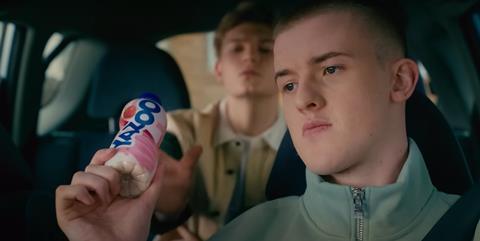
Yazoo
Gen Z is likely the most intensively studied consumer demographic in history. But their ceaseless dissection and the resulting data can make brands’ view of them a little two-dimensional. And too often in ads that target them, it shows.
In its £3m campaign this year, Yazoo does well in remembering that young people are not so different to young people that have existed before: they like a laugh with their mates, miming to music, and go all funny when the opposite sex is present.
Here, a lad waits in what looks to be his first car with two buddies. TLC’s No Scrubs comes on the radio and, after a swig of the drink, they all bop along. It’s a fun standalone ad, but the activation opportunity of tapping Tik Tok’s lip-syncing trend wasn’t passed over, supported by competitions and retail promotions.
Cooking sauces
Loyd Grossman
The Boston Brahmin, mish-mash mid-Atlantic accent is what Loyd Grossman is best known for. That and, increasingly, his pasta sauces.
On the face of it, there’s little exceptional about the sauce brand’s advert from earlier this year. So what about it sparked controversy and conspiracy?
Online debate raged about whether the voiceover in the ad was really Grossman, or – gasp – an impersonator? Many cried fake. What do you think? David, it’s over to you.
Crisps
Walkers
To the soundtrack of Frankie Goes To Hollywood’s The Power of Love, various farmers – actual ones working for the brand, we’re told – are shown taking special care in growing and selecting ’taters to be sliced and salted in the factory.
“We love potatoes… so you can love Walkers” goes the tagline, relieving consumers of having to concern themselves with the provenance of their snacks. But it’s the crisp-scoffing granny at the bus stop who delivers the ad’s real crunch.
Dairy: Butters & Spreads
Lurpak
In the late 2000s, Lurpak elevated food advertising to something close to cinema thanks to action film angles, choppy cuts, sensational storytelling and excellent scripts. According to one ad-maker, brands now ask: “Can you Lurpak it up a bit?”
The ads have a distinct style, despite drawing on sci-fi, renaissance art, jazz music and, this year, Broadway showtunes. And the copywriting (and now lyric writing) is still strong: “There isn’t much in life that cooking can’t fix”. Chef’s kiss.
Dairy: Cheese
Cathedral City
The brand launched its ‘Our Make it Better Cheddar’ campaign and TV ad last year – featuring a father and son who uncover what makes the cheese ‘so consistently delicious’.
But it’s Cathedral City’s continuing output of NPD that has kept the brand high in awareness metrics among consumers. New arrivals appear a particular favourite of YouTubers keeping tabs on such things. “I went out and bought one on the strength of this review,” reads one comment.
Dairy: Cheese Spread

Philadelphia
The two gal pals of Philadelphia’s ad campaign have been through lots together. And also a lot of cream cheese.
In a heart-warming montage, their friendship is shown starting as schoolkids over a pack of Philadelphia Minis. As tweens they’re messing with mum’s make-up (complemented by what looks like an experimental serve, including jam); later there are student scrapes, an argument disrupted by a Philly spillage and a wedding (catered with Philadelphia-topped finger food). The time covered and occasions portrayed subtly highlight Philadelphia’s long heritage and position it as both comforting pick-me-up and refined option.
A left-field choice of soundtrack – the super-corny Hold Me Close by David Essex – helps the highly likeable ad stand out.
Dairy: Handheld Ice Cream
Magnum
To mark the launch of two new double flavours, Starchaser and Sunlover, Magnum unveiled its ‘Pleasure Pass’ initiative, which involved giving away hundreds of tickets to gigs and festivals.
The choice of musician Tom Grennan as the face of the campaign elevated it from simple giveaway to summer fun rescue mission. Grennan is vocal about keeping ticket prices for gigs and shows “as low as possible”.
Thousands entered, and the campaign generated 200 items of news coverage.
Dairy: Ice Cream Tubs
Mackie’s Of Scotland
In a time of frenetic NPD in the ice cream market, Mackie’s is keeping it simple with a classic flavour offering that it suggests is more likely to satisfy the taste preferences of the whole household. The words ‘simple’ and ‘family’ could have been the whole brief of its advertising campaign this year, which shows its tubs being enjoyed in conceivable situations (no pushing of new occasions here) by young and old. The ad scored incredibly high in System1’s analysis of audience responses.
Dairy: Yoghurts
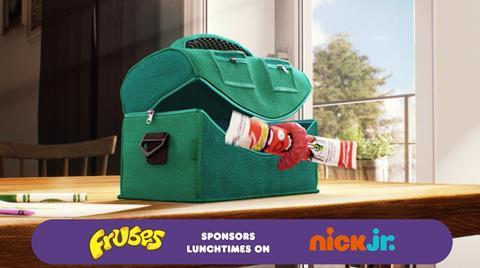
Yoplait
Yoplait secured its first UK TV sponsorship deal this year.
Petits Filous was sponsor of Milkshake, Channel 5’s preschool strand, over six months – the playful idents featuring fruits brought to life with cartoon eyes and limbs, and living up to their ‘little rascals’ moniker.
Frubes, meanwhile, sponsored multiple Nickelodeon channels for a three-month period, reaching a total of 950,000 children in the three to 10-year-old demographic.
Frozen: Meat
Birds Eye
It can be difficult trying to get through to your gen Z kids. But Birds Eye’s sassy witch mother figure gives it a good go. Her magic spatula certainly helps.
With son and pals mesmerised by the games console behind a table covered in beige takeaway food, “not winning at Friday night, are we?” she jibes, before zapping the table and summoning a scrumptious-looking chicken burger.
It’s the kids’ response that’s meant to catch the attention of parents: “Whoa! Legend!”
Hot Beverages: Tea
Yorkshire Tea
A star was born this summer: Skipton Alfie, the spotty, Yorkshire Tea-loving teen off to Ibiza on his first lads’ holiday. As his alarm chimes for “stupid o’ clock”, he races to pack his bag, choosing teabags over most other holiday essentials.
A brave break from the brand’s previous clever use of famous Yorkies like Patrick Stewart and Sean Bean, this year’s campaign won the adoration of customers. And it’s the soundtrack – original song Pack Yer Bags – that did it.
The Lucky Generals creatives behind the ad told LBB “we knew from the off that we didn’t want this to be an ad parody” and that the song “had to be a genuinely banging track”.
It’s packed with lyrics that would make Alex Turner envious and includes a nice nod to gen Z’s healthier habits. Alfie is sure to be back before long.
Frozen: Potatoes
McCain
Comedian Iain Sterling plays a curious everyman in the brand’s ‘Let’s All Chip In’ ad, which makes the case for regenerative agriculture.
Farmer Imogen Stanley takes the wisecracking Sterling to her family farm in Oxfordshire for a lesson in spuds. A TikTok series continued the teaching, helping close the gap between gen Z’s concerns about the environmental impact of their groceries and their lack of knowledge of how farms and farming work (revealed by McCain research).
Frozen: Ready Meals
Heinz
Heinz is widely recognised and adored. But the brand wanted to get the message out that “there’s so much more our legendary beans can do”, said Kraft Heinz growth manager Emily Wright. For example: forming the basis of a spate of NPD at the start of the year that included frozen meals.
Here, an office nerd steals one of said meals from the freezer, and his co-workers react in the form of a jingle – a reworking of EMF’s hit Unbelievable (to ‘Unbeanlievable’). Geddit?
Functional
Actimel
Strictly Come Dancing favourite Giovanni Pernice creates a fun dancercise session out of mundane tasks in Actimel’s campaign: making the bed becomes The Pillow Body Pop, getting dressed is The Suit Shake and grabbing breakfast transforms into the Fridge Foxtrot.
Whether anyone will be bopping along at home is uncertain, but the overarching message is infectious – squeeze some movement into your everyday activities (and shoot an Actimel) and you’ll benefit.
Household: Air freshener
Air Wick
It’s a rather extravagant (but beautiful) means to freshen up a home: covering a clothes rack in fresh flowers, then blowing them with a fan that scatters sweet scented petals everywhere. “How far do you go to reduce odours and keep things fresh?” a voiceover enquires.
With air freshener brands really up against it in trying to communicate the wonderful whiffs of their products, Air Wick manages to get odours that challenge with humour and colour.
Meat-free
Quorn
The pie and a pint culture of British football catering was challenged back in 2010, when eco entrepreneur Dale Vince transformed Forest Green Rovers into the first vegan football club in the world. Half-time food options for punters were switched to non-meat alternatives (including Quorn).
“I just bumped into the fact… I was going to be part of the meat trade if I didn’t change the menu of the club,” he recounts in one of Quorn’s Protectors of the Planet films, which came out earlier this year.
Other mini-documentaries follow a Singaporean endurance athlete once on a diet of a kilo of meat a day, and a US rancher whose “moral dilemma instigated an ultimatum” over giving up meat.
The shorts beg the question: if they can do it, at far bigger personal cost, why can’t you?
Household: Cleaning
Zoflora
Countertops explode into clouds of flower petals (impressively all done in camera and without CGI) with a wave of the hand from a glamorous woman in a green jumpsuit. If only cleaning was really this easy – and chic.
Solid forward thinking from the creatives of this campaign saw the ad begin with a woman strutting towards a cupboard, which she opens to reveal a range of products – and since the ad’s first appearance in 2021, what’s inside can be updated with some clever editing.
Household: Paper
Andrex
There’s a toilet training crisis in the UK. In response, Andrex launched GoTime, an interactive storybook app for kids featuring a cast of cute characters (including, of course, the Andrex puppy).
“There are millions of parents who see toilet training as a stressful moment, so we’ve created a one-stop shop that gives parents all they need,” says Emma Drew, head of consumer engagement at Kimberly-Clark.
High ratings on the app stores suggest parents appreciate it.
Instant Coffee
Nescafé
A hipster is tossing his shaker with all the flair of a professional mixologist. But it’s not a cocktail. It’s a coffee.
According to Nescafé, up to half of coffee shop coffees come with ice and, crucially, its instant coffee dissolves in cold tap water, something TikTok users struggled to get their heads around in the ‘Shake Up Your Summer’ campaign. “U DID NOT JUST PUT STRAIGHT WATER IN THERE” one screamed, evidently shaken herself.
Milk Alternative
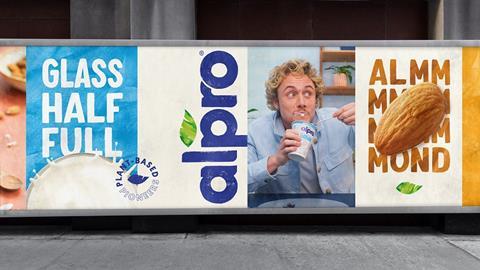
Alpro
It’s been a while since milk alternatives were exciting just for existing. Now the novelty factor has faded, and with own-label options growing in popularity, Alpro has undergone a major brand refresh.
Hedwig Borgers, Danone’s global plant-based marketing director, told Green Queen: “It’s easy to get lost in the many brands shouting to be as loud and funny as possible.” For Alpro it’s now more important to provide facts than “just stick to punny marketing”.
Personal Care: Cosmetics
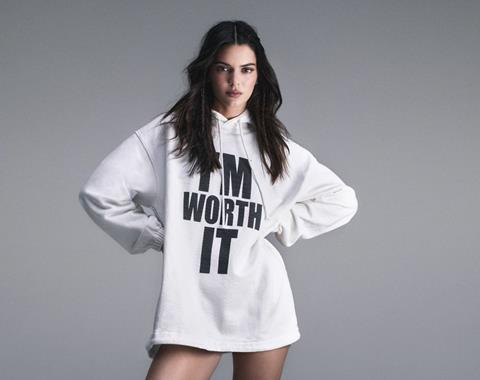
L’Oréal Paris
The might of the sex tape star turned reality show celebrity turned social media mogul turned entrepreneur Kim Kardashian and her siblings is for many unfathomable, but it is undeniable.
Kim, Khloé and Kourtney’s younger half-sister Kendall Jenner is the 12th most followed account on Instagram (ahead of Taylor Swift) and she has, at various times, been the world’s highest-paid model.
Get your product in her hands (and photograph it) and the sales boost provided is phenomenal. “She is the embodiment of everything gen Z stands for, owning her image, proudly growing in her self-worth, and inspiring others to do the same,” gushed L’Oréal Paris global brand president Delphine Viguier-Hovasse, when announcing Jenner as ambassador earlier this year.
Personal Care: Deodorants
Lynx
Lynx’s Africa variant is the Greatest Of All Time, according to the brand, which tapped the recent phenomenon of giving literally anything GOAT status in its campaign this year.
The ad – which appeared on the usual channels as well as Twitch and Spotify – does feature an animated goat, but the focus is typical teenage boy stuff like trainers, pals and gals.
Brand manager Josh Plimmer said Lynx was evolving “to recruit the next generation by getting closer to their world”.
Personal Care: Female Skincare
Dove
Toxic beauty content is rife on social media. Cost of Beauty: A Dove Film is the story of a girl as she struggles with an eating disorder spurred on by influencers.
“If there isn’t real change, young people will continue to pay with their wellbeing,” said Alessandro Manfredi, chief marketing officer for Dove. “We have a responsibility to act.”
The brand is providing access to mental health resources for young people and lobbying for regulation on social media content and addictive algorithms.
Personal Care: Shampoo
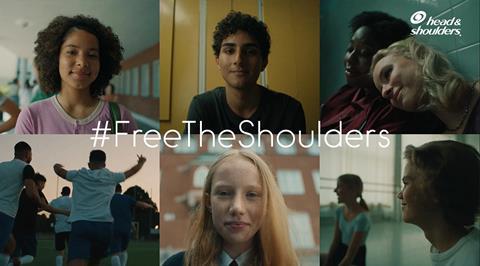
Head & Shoulders
One in three teenagers are bullied, and those with dandruff are twice as likely to be among them. A slightly odd stat, but one the shampoo brand pounced on for its continuing #FreeTheShoulders campaign, which involves a programme to educate a million young people and parents on how to fight all forms of bullying, including dandruff-related incidents.
The brand’s mission is to “eliminate some of the cultural stigmas that are the source of bullying today”.
Personal care: Shaving
Harry’s
An older executive in a beige boardroom becomes transfixed by a younger colleague’s satsuma peeling technique.
“And then he just peeled it in one,” he tells any colleague who will listen. “The rind was a completely consistent width,” he adds to an uncomfortable staffer in the urinals.
It’s an oddball choice for sure, but it chimes with the brand’s creative strategy of highlighting how an everyday activity done well – like having a shave or peeling fruit – can impress.
Petcare
Felix
Amid tumbling sales, growing own-label competition, and the threat of delistings, the petcare brand introduced illustrated feline Felix as its mascot in a major 1989 campaign. He helped drive a dramatic increase in market share, and his regular outings since have secured Nestlé Purina top spot in the petcare category for several years on the trot.
Robbie Williams is no stranger to the number one spot either, and his enduring popularity made him the perfect foil for Felix in the brand’s ‘It’s Great To Be A Cat’ campaign earlier this year.
Central to the campaign is an original song penned by Williams, and the accompanying TV spot that sees the duo jostling for the limelight during an orchestra-backed performance more than makes up for some rather lacklustre lyrics.
Personal Care: Toothpaste
Colgate
Since Covid, imagery of fast-multiplying cells commands more attention than it used to. In Colgate’s latest, icky bad bacteria (of which we’re warned there are millions living in our mouths) is represented by a blue and black alien form, flushed away, thankfully, by the cooling cloud of toothpaste.
All the benefits of the product are plainly listed, and a happy-looking dentist at the end signals the profession’s approval. It’s nothing new, but it doesn’t need to be.
Potted dessert
Müller Rice
One of the biggest TikTok trends of the year took hold in April, when users started capturing movie-maker Wes Anderson-isms in their everyday lives.
Müller Rice released its own take on the trend: an homage to Anderson’s 2001 film The Royal Tenenbaums. An oddball family – all in vintage sportswear – are aghast when the son expresses his desire to heat the rice pot. “Nonsense,” screams dad. But the boy wins the support of grandad, who joins him in the microwave-based revolution.
Savoury biscuits
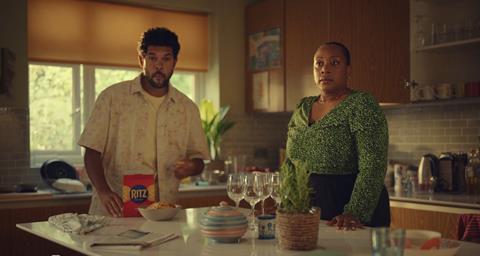
Ritz
A family is enjoying some crackers and is caught off guard when their guests arrive early. The doorbell chime kicks off a cleaning frenzy only completed at the last second and topped with more crackers.
“We’ve all been there… no matter how prepared you think you are, there’s always a last-minute panic,” said Jim Capp, creative director at VCCP London, which created the ad.
It’s fun, fast-paced and the tagline is highly relatable: “Ritz. Ready when you aren’t.”
Savoury Pastries
Ginsters
The brand’s £4m ‘Taste The Effort’ campaign represents its biggest marketing spend to date and is estimated to have reached 98% of Ginsters’ target audience via TV, OOH, social, PR and shopper marketing.
In it we meet Merryn, a farmer who is “obsessed with veg”. The character – who has more than a bit of This Country’s Kerry about her – is shown being a scarecrow, talking to plants via baby monitor at night and tearfully sending off her potatoes in a truck. A worthy brand champ.
Soft drinks: Carbonates
Diet Coke
“The Diet Coke Breaks are classics,” said supermodel Kate Moss, and quite rightly, when an extension to her stint as ‘creative director’ of the brand was announced in the summer.
Bang on trend, rather than manufacture a new classic, Moss recycled and reused one of the most famous ads of all time: the 11.30 Diet Coke Break.
Her “fashion twist” sees the morning caffeine hit not as a moment to ogle workmen, but rather use one as inspiration – grabbing some chains off his sweaty shoulder to drape over one of her models. A silly set-up, but a good excuse to show the star swigging from a can.
More recently, in a Louis Theroux interview with her ex Pete Doherty, the musician mocked the ad with more than a whiff of lover scorned, proving it has lodged itself in the mind of at least one of its audience.
Soft Drinks: Sports & energy drinks
Red Bull
Red Bull has a formula that works. The line-drawn visual style of its ads has been around since the 1990s, as has its ‘gives you wiiiings’ slogan.
But the category it practically birthed has changed since then. It has a major rival in Monster, and a slew of challenger brands.
Its 2023 ad sticks to the format (this time with a skateboarding hound) albeit with a nod to the new environment and its recent NPD: “Who says you can’t teach an old dog new tricks?”
Soft Drinks: Squashes & Cordials
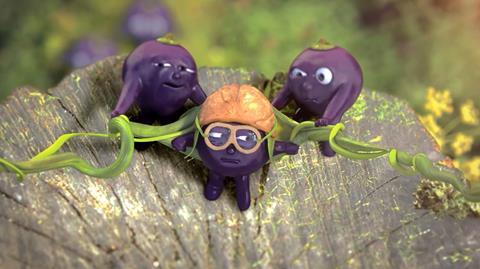
Ribena
The brand fields “regular requests to bring the berries back on air” it claims, and in its 85th anniversary year, it decided to capitulate.
The brand mascots haven’t been used since 2014 but return as mischievous and fun-loving as ever, catapulting themselves on to a farmer’s truck en route to the pulping facility.
In the 30-second ad – part of a £5m ‘Summer of Fun’ drive – we hear the blackcurrants are grown in Britain and contain lots of vitamin C. Berry good.
Soft Drinks: Water
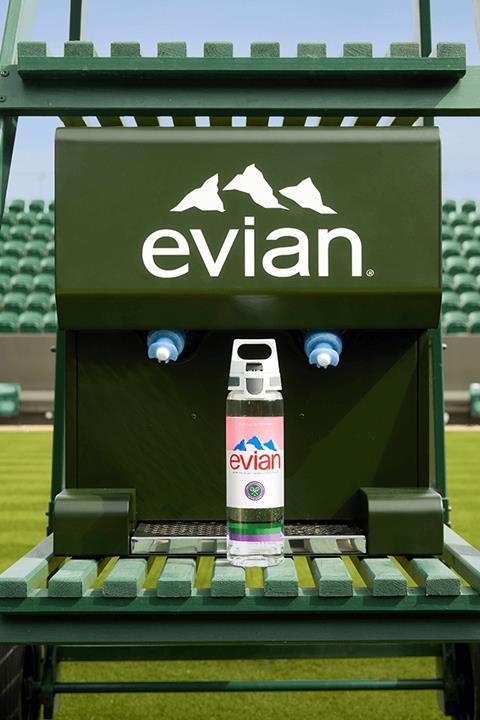
Evian
Tennis players still hurl water bottles in frustration, but less commonly at Wimbledon, with its focus on etiquette. Which must disappoint the likes of Evian, who would surely kill for a branded bottle snapped ricocheting off a startled umpire’s bonce on the back pages.
So how to stand out (especially in a year without Rafael Nadal and his bottle arranging ritual)? An on-court refillable water system, from which players filled their bigger-logoed, reusable bottles. Smart.
Spreads
Lyle’s Golden Syrup
Being a brand synonymous with an ‘occasion’ can be a blessing and a curse. What if those occasions tail off, or you want to break through a ceiling in sales? Lyle’s is a major player in baking – but with the lockdown boom over and GBBO feeling tired, what now?
The brand worked to break out of the category this year in an ambitious bid to become a toast topping. The ads are somewhat trippy and a lot of fun. Much like a morning featuring that much sugar might be.







![GettyImages-951635032 (1) [Converted]_0001](https://dmrqkbkq8el9i.cloudfront.net/Pictures/480x270/9/2/5/311925_gettyimages9516350321converted_0001_311144.jpg)


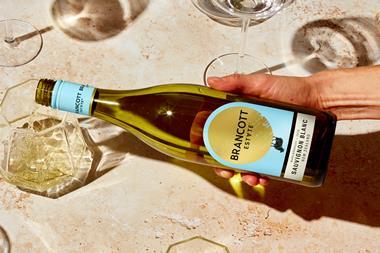


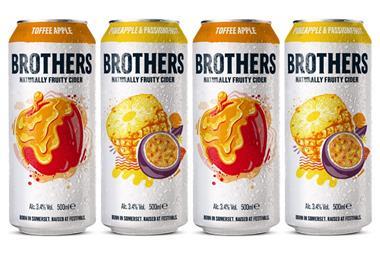






No comments yet